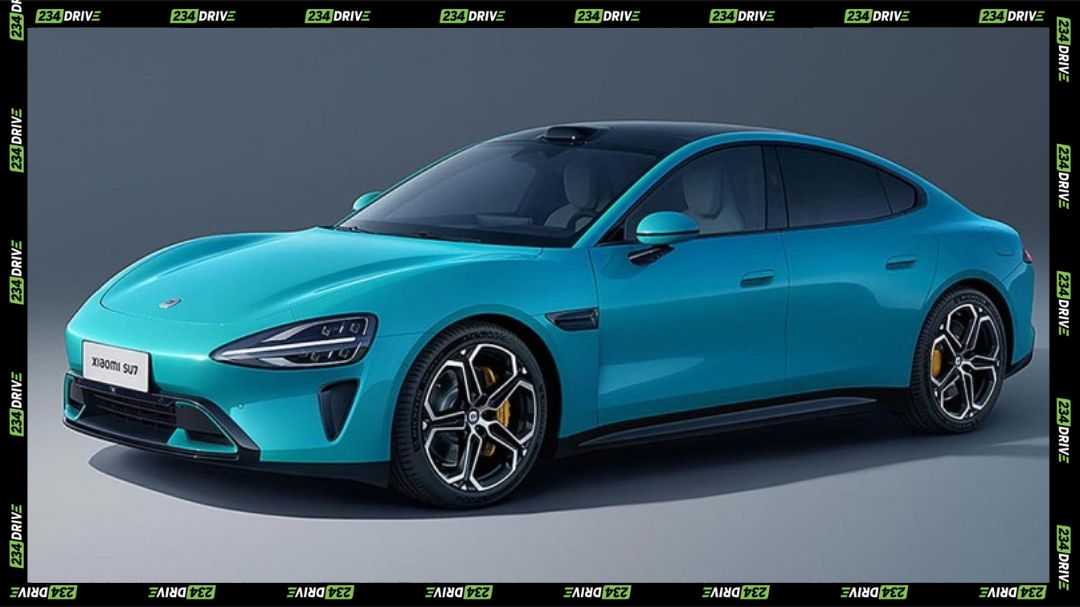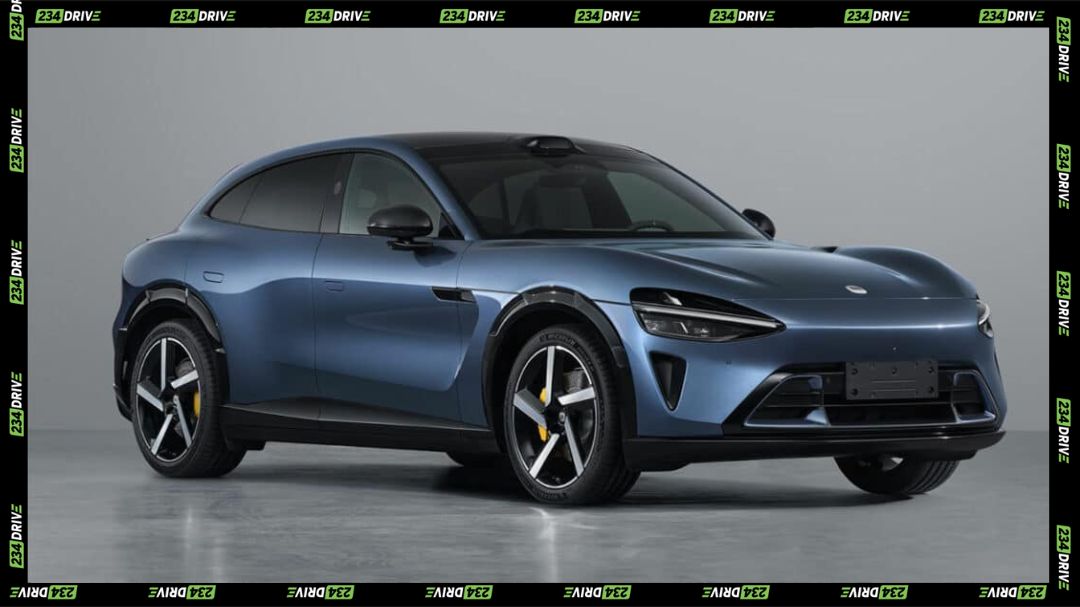In 2021, Xiaomi launched Xiaomi Auto with an initial 10 billion yuan (about $1.4B USD / ₦2.09 trillion) investment, signalling its leap from consumer electronics into the crowded EV space. By 2025, the company had unveiled two models: the SU7 sedan and the YU7 SUV, both manufactured in Beijing. With pricing that undercuts rivals and ranges pushing past 800 km, Xiaomi is reshaping expectations in China’s hyper-competitive EV market.
The SU7 sedan, introduced in March 2024, represented Xiaomi’s entry into the automotive industry. Production started in late 2023, and deliveries began swiftly afterward. Styled as a sleek fastback with a drag coefficient as low as 0.195, the car quickly became a talking point for its blend of affordability and advanced features.
Pricing began at 215,900 yuan (about $30,400 USD / ₦45.4 million) for the base version, rising to 529,900 yuan (about $73,000 USD / ₦109.1 million) for the Ultra trim. A Nürburgring edition pushed above $113,500. The lineup included four trims—Base, Pro, Max, and Ultra—catering to a wide spread of buyers.

Performance varies across models. The base SU7 with a 73.6 kWh LFP pack delivers up to 700 km (435 miles) of range, 295 hp, and a 0-100 km/h time of 5.28 seconds. The Pro model stretches to 830 km (516 miles) of range with similar output. The Max ups power to 664 hp, sprinting to 100 km/h in 2.78 seconds with a 101 kWh NMC battery. At the top, the Ultra pushes output to over 1,500 hp, cracks 0-100 km/h in under two seconds, and tops out at more than 350 km/h, thanks to a 93.7 kWh NMC pack and 490 kW fast charging. Across all trims, dimensions sit around 4,997 mm in length with a 3,000 mm wheelbase, making it a full-size sedan.
Inside, the SU7 integrates Xiaomi’s tech ecosystem. A 16.1-inch infotainment display runs on Xiaomi HyperOS and Qualcomm Snapdragon 8295 hardware. Driver aids include Xiaomi Pilot with LiDAR on higher trims, plus adaptive suspension and a suite of advanced sensors. The Ultra trim even offers an FIA-grade roll cage and a 25-speaker Dolby Atmos system.
By June 2025, Xiaomi expanded its range with the YU7 SUV, its first crossover, aimed squarely at the mid-size luxury family market. Pricing starts at 253,500 yuan (about $35,360 USD / ₦52.9 million) for the base model, climbing to 329,900 yuan ($46,000 USD / ₦68.8 million) for the Max. That puts it below Tesla’s Model Y, a deliberate move to undercut competitors while offering competitive specs.
Performance lives up to expectations. The base YU7 packs a 96.3 kWh LFP battery, good for 835 km of range, with 315 hp and a 0-100 km/h time of 5.9 seconds. The Pro steps up to 489 hp and 770 km of range, cutting the sprint to 4.27 seconds. The Max brings 681 hp, 760 km range, and 0-100 in just 3.2 seconds, backed by a 101.7 kWh NMC battery and 12-minute 10-80% charging capability.

The SUV measures 4,999 mm long, 1,996 mm wide, and 1,600 mm high, with the same 3,000 mm wheelbase as the SU7. A drag coefficient of 0.245 keeps it efficient, while features like dual-chamber air suspension, Brembo brakes, and Xiaomi’s HAD autonomous system with LiDAR position it as a tech showcase. Cabin highlights include a 1.1-metre HUD, Dolby Atmos 25-speaker option, and eco-friendly interiors. Cargo space totals 678 litres in back (expandable to 1,758 litres) plus a 141-litre frunk.
Xiaomi’s entry has been met with overwhelming demand. The SU7 sedan attracted nearly 89,000 preorders within 24 hours of launch. By 2025, it was delivering close to 30,000 units a month, with Q1 2025 deliveries at 75,869, generating €2.2 billion in revenue. The YU7 SUV broke even those records, with 200,000 orders in the first three minutes of availability and 289,000 within the hour.
By August 2025, Xiaomi delivered over 30,000 vehicles in a single month, pushing EV revenue to $16 billion in Q2 2025—a 30.5% year-over-year increase. Net profit surged 75.4% to $1.5 billion. With sales momentum building, Xiaomi raised its 2025 delivery target to 350,000 units.
Xiaomi’s EVs shine because of their blend of price and performance. Compared to Tesla, Xiaomi undercuts pricing while delivering equal or greater range and charging speeds. Social media discourse highlights this advantage, though concerns persist about charging infrastructure and whether production can keep up with demand. Regulatory hurdles have also slowed international expansion—India, for instance, remains off the table for now.
Plans are in motion for European entry by 2027, which would mark a significant shift from Xiaomi’s current China-focused approach. Still, competition in China is intense, with rivals like BYD, Nio, and Li Auto pressing aggressively.
Xiaomi has proven it can parlay its expertise in consumer electronics into a credible automotive business. The SU7 sedan established credibility; the YU7 SUV cemented demand. Together, they showcase how a tech brand can move into mobility and redefine consumer expectations.
Whether Xiaomi can scale beyond China and establish itself as a global player remains to be seen. But its first steps already show that the EV market isn’t just about legacy automakers and startups; it now includes consumer tech giants who understand ecosystems, affordability, and rapid innovation.
As Xiaomi eyes Europe and perhaps beyond, will consumer trust in a phone-maker turned automaker be strong enough to compete against established car brands, or will its advantage in affordability and integration prove irresistible?









